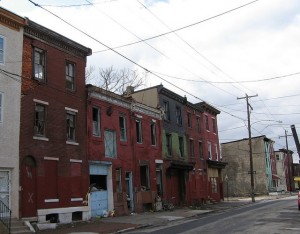Ask Americans to draw a mental map of who lives where, and they will likely say that immigrants and the poor live in large cities such as New York, Chicago, Los Angeles, and San Francisco, while middle-class whites make their homes in the surrounding suburbs. But these mental maps are often inaccurate. Today, more poor people live in suburbs than in central cities, and more than half of all metropolitan-area immigrants reside in suburbs. Immigration, job growth, and residential choices are making our nation’s suburbs more economically and culturally diverse.
How are suburban leaders responding to disadvantaged immigrants in their communities? Are they doing as much to support immigrant residents as leaders in traditional gateway cities? We explored these issues by tracking flows of public money through four local governments in the San Francisco Bay Area. A key federal government initiative, the Community Development Block Grant program, allocates millions of dollars to help municipalities improve services and support for low and moderate-income residents. When Bay Area municipalities put these funds to use, do big central cities and suburbs do equally well at helping poor immigrants?
Bay Area Suburbs Do Less for Their Immigrant Residents
When we tracked the Community Development dollars, we discovered significant disparities.
- In San Francisco, a central city with a long and continuous history of receiving migrants, immigrant organizations got about a third of Community Development funds allocated to community groups – a share close to the percentage of immigrants in the city’s lower-income population.
- In San Jose, a central city whose fast-growing population is fueled by recent immigration, officials did less for immigrant organizations. Although newcomers made up 42 percent of the poor, during the years 2004 to 2007 only 18 to 28 percent of Community Development funds for nonprofits went to organizations serving immigrants.
- Many migrants are also settling in the Silicon Valley suburbs of Fremont and Mountain View – but between 2004 and 2007 those places allocated not a single dollar of Community Development money to immigrant organizations. The overall rate of poverty is lower in these rich suburbs, yet immigrants made up about half of their poor residents, a higher share of the poor than in San Francisco or San Jose. The failure to give money to immigrant organizations is especially striking given that Community Development grants are supposed to make a special effort to help people in disadvantaged households.
Why Suburban Officials Overlook Poor Immigrants
It is not just ordinary Americans who hold faulty mental maps of where disadvantaged immigrants live. Even in progressive suburbs that pat themselves on the back for openness to diversity, officials fail to perceive the needs of immigrants in their midst.
- Failing to see which residents really need help. To some elected and appointed suburban officials, immigrants are completely invisible; to others, immigrants seem too rich or well-organized to be truly in need of public support. In other instances, immigrants may be overlooked, because they are too insular and unorganized to team up with local government in offering social services. Like many other Americans, suburban officials can cling to outdated images of suburban life, and they tend to reach conclusions about immigrants’ needs without direct or extensive dialogue with newcomers.
- Assuming that neighboring big cities can do the job. Some suburban officials expect immigrant residents to travel long distances to get services from well-established immigrant organizations in neighboring central cities. This may seem like a good way to stretch limited suburban resources, but it defies both the letter and spirit of the Community Development grants – which are intended to help the needy residents of specific cities, not entire regions. Suburban officials ignore that population growth (driven in part by immigration) has increased Community Development funds for their suburbs while funds for traditional gateways like San Francisco have stagnated. Tellingly, suburban officials do not take this free-riding approach with other needy residents.
Key Principles for Greater Inclusion
How can we build more productive relationships between local officials and the growing population of immigrant and disadvantaged residents living in suburbs and new gateway cities?
- Build civic organizations in all immigrant communities. Immigrant residents of traditional gateway cities like San Francisco benefit from a diverse set of organizations with expertise, extensive networks, and a strong belief that they are legitimate stakeholders in city affairs. Similar civic capacities need to be seeded and nurtured in new immigrant locations – a job to be tackled jointly by local governments, nonprofit groups, foundations, and private citizens who want to make a difference.
- Have municipal officials do active outreach. In larger cities, public staffers reach out to under-served communities, including immigrants. City employees connect immigrant-serving groups to other officials and teach them how to write grant proposals. Despite budget constraints, key officials in smaller cities need to make similar efforts.
- Give central city and suburban officials the facts. Working with immigrant groups, college and university-based scholars should use data mapping to educate officials in all municipalities about the needs of disadvantaged immigrants living in their jurisdictions.


 Research to Improve Policy: The Scholars Strategy Network seeks to improve public policy and strengthen democracy by organizing scholars working in America's colleges and universities. SSN's founding director is Theda Skocpol, Victor S. Thomas Professor of Government and Sociology at Harvard University.
Research to Improve Policy: The Scholars Strategy Network seeks to improve public policy and strengthen democracy by organizing scholars working in America's colleges and universities. SSN's founding director is Theda Skocpol, Victor S. Thomas Professor of Government and Sociology at Harvard University.
Comments 2
Helping the Growing Ranks of Poor Immigrants Living in America’s Suburbs - Treat Them Better — December 29, 2014
[…] Helping the Growing Ranks of Poor Immigrants Living in America’s Suburbs […]
Armut in us-amerikanischen Vororten - UrbanFreak — January 3, 2015
[…] einem Paper, welches kurz vor Jahresende auf den Society Pages veröffentlicht wurde, geht es um die stark […]